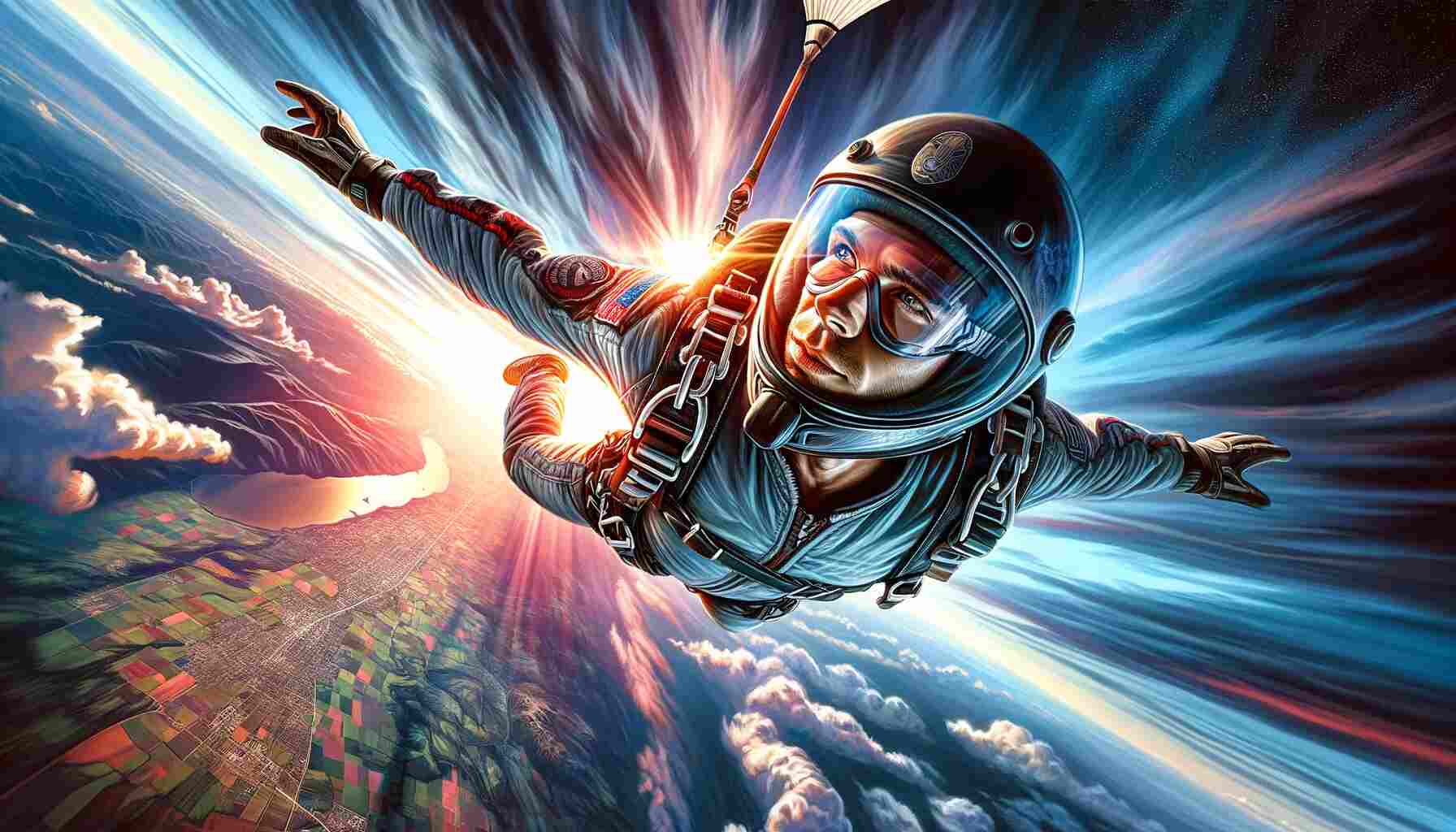Skydiving is often described as one of the most exhilarating and heart-pounding experiences a person can have. It’s a leap into the unknown, a rush of adrenaline, and a moment of pure freedom. In this, we will explore the sensations and emotions that come with skydiving. From the feeling of jumping out of a plane to the gentle glide under the canopy, we will delve into what it’s really like to skydive.
The Anticipation
The moment leading up to a skydive is a mix of excitement, nervousness, and anticipation. As you suit up in your jumpsuit, harness, and helmet, your heart begins to race. The adrenaline starts to flow as you receive instructions from your tandem instructor or prepare for your solo jump.
The Feeling of Freefall
The instant you step out of the airplane, you are engulfed in a sensation unlike any other. The initial seconds of freefall are a whirlwind of emotions and physical sensations. The wind rushes past you at speeds of up to 120 miles per hour, and you feel like you’re flying.
- Weightlessness: One of the most remarkable feelings during freefall is the sensation of weightlessness. You are no longer bound by gravity in the same way you are on the ground. It’s akin to floating in the vast expanse of the sky.
- Wind Rush: The air resistance against your body creates a powerful wind rush that surrounds you. It’s loud, intense, and thrilling. The wind tugs at your clothing and flaps your cheeks, adding to the sensory overload.
- Adrenaline Surge: Skydiving triggers a significant adrenaline rush. Your heart races, and your senses are heightened. It’s a mix of fear and excitement that leaves you feeling more alive than ever.
- Time Distortion: Oddly, time can feel distorted during freefall. What might seem like minutes is often only a matter of seconds. Your brain is processing an incredible amount of information, making each moment feel longer and more vivid.
The Parachute Deployment
After approximately 60 seconds of freefall, it’s time for the parachute to open. The sudden change in motion is noticeable, and it comes with a few distinct sensations:
- Deceleration: When the parachute deploys, you feel a sudden deceleration. The rapid change from terminal velocity to a slower descent speed can be felt in your stomach.
- Gentle Tug: As the parachute fully inflates above you, you’ll experience a gentle upward tug. It’s a reassuring feeling, knowing that your canopy is open and you’re about to start the next phase of your skydive.
The Canopy Ride
Once the parachute is open, you enter the canopy ride phase of your skydive. This is a more relaxed and serene part of the experience, allowing you to take in the breathtaking views and savor the moment.
- Serenity: The shift from the adrenaline-fueled freefall to the peaceful canopy ride is striking. You go from a high-speed descent to a slow, graceful glide through the sky. It’s a moment to catch your breath and soak in the beauty around you.
- Scenic Views: Skydiving offers a unique perspective of the world below. You can see for miles in every direction, and the beauty of the landscape is awe-inspiring. It’s a feeling of being connected to the world from a whole new vantage point.
- Control: If you’re doing a solo jump, you have the opportunity to control the parachute. This adds a sense of empowerment as you steer and navigate your way back to the drop zone. It’s a feeling of being in control of your destiny.
The Landing
As your parachute nears the ground, the excitement builds once again. Landing is a skill that your instructor or you as a solo jumper will have taught you, and it’s a crucial part of the skydiving experience.
- Precision: Landing requires precision and skill. You’ll feel a sense of accomplishment as you execute a well-controlled landing. It’s a moment of triumph after the incredible journey you’ve just undertaken.
- Adrenaline Rush Redux: The final moments before landing bring another surge of adrenaline. Your heart rate increases, and your focus narrows on the target area. It’s a thrilling climax to the skydive.
Indoor Skydiving: A Different Sensation
While traditional outdoor skydiving offers a unique set of sensations, indoor skydiving, also known as vertical wind tunnel flying, provides a distinct experience.
- Weightless Indoor Flight: In indoor skydiving, you’re suspended in a vertical wind tunnel by a powerful updraft. You experience a sensation of weightlessness and can perform maneuvers that mimic outdoor freefall. The feeling is similar to floating on air, and it’s often less intimidating for beginners.
- Precise Control: Indoor skydiving allows for precise control of your body movements. You can practice various skydiving maneuvers and perfect your form in a controlled environment. This is particularly beneficial for those looking to improve their skydiving skills.
What Does Skydiving Feel Like Emotionally?
Beyond the physical sensations, skydiving evokes a wide range of emotions.
- Fear: Fear is a natural response to the idea of jumping out of an airplane. Many first-time skydivers experience fear leading up to the jump. However, this fear often transforms into excitement and exhilaration once they’re in freefall.
- Exhilaration: The overwhelming feeling during a skydive is exhilaration. It’s a mix of joy, awe, and wonder as you take in the incredible views and the sensation of flying through the sky.
- Freedom: Skydiving offers a profound sense of freedom. For those precious moments in the air, you’re free from the constraints of the ground and everyday life. It’s a liberating experience that can be addicting.
- Confidence: Successfully completing a skydive can boost your confidence in remarkable ways. It’s a tangible achievement that reminds you of your ability to conquer fears and take on new challenges.
Safety and Preparation
Skydiving is an adventure sport, and safety is paramount. Before you jump, you’ll receive thorough training from certified instructors. You’ll learn how to use the equipment, handle emergency situations, and execute a safe landing. All equipment is rigorously maintained and inspected to ensure your safety.
Safety Statistics: Confidence in the Numbers
Before we explore the safety measures, let’s find confidence in some reassuring statistics:
- Incident Rates: According to the United States Parachute Association (USPA), the governing body for skydiving in the U.S., skydiving boasts an impressive safety record. Recent years have seen a fatality rate of less than one per 200,000 jumps.
- Continuous Improvement: Skydiving organizations worldwide are dedicated to enhancing safety standards. They meticulously analyze incidents, leading to advancements in equipment, training, and procedures.
- Certified Instructors: Skydiving instructors are not just experts; they undergo rigorous training and certification processes to ensure participants receive top-notch guidance.
Rigorous Training: Shaping Competent Skydivers
Central to skydiving safety is the comprehensive training offered to participants:
- Ground School: Everyone, whether a first-timer or an experienced skydiver, must attend ground school before taking to the skies. This training covers equipment usage, safety protocols, body positioning, and emergency procedures.
- Tandem Instructor Expertise: Tandem instructors, who accompany first-time jumpers, receive specialized training. They are certified professionals with extensive experience, ensuring a safe and enjoyable jump for newcomers.
- License Levels: Skydivers earn licenses through progressive training levels. Each level builds upon the previous one, enabling jumpers to gain more experience under controlled conditions.
Risk Mitigation: Safely Navigating the Skies
Skydiving centers leave no stone unturned when it comes to safety:
- Weather Monitoring: Skydiving centers vigilantly track weather conditions. The decision to jump is based on factors like wind speed, cloud cover, and visibility. Safety always takes precedence over the urge to jump.
- Tandem Jumps: For those new to skydiving, tandem jumps are a fantastic way to minimize risks. Jumping with a highly trained instructor ensures that even beginners can experience the thrill safely.
- Equipment Inspection: Parachute systems undergo regular maintenance and stringent inspections. Every piece of gear is meticulously checked to ensure it’s in perfect working condition.
- Emergency Procedures: Skydivers are trained to handle emergencies. They learn how to deploy backup parachutes and manage situations like canopy malfunctions.
Conclusion
Skydiving is a unique and exhilarating experience that combines physical sensations, emotional highs, and breathtaking views. It’s a journey that takes you from the anticipation on the ground to the thrill of freefall, the serenity of the canopy ride, and the triumph of a safe landing. Whether you’re a first-time jumper or a seasoned skydiver, the feeling of jumping out of an airplane and soaring through the sky is an experience like no other. It’s a reminder of the beauty and wonder of our world and the incredible sensation of flight.
So, what does skydiving feel like? It feels like freedom, excitement, and adventure all rolled into one heart-pounding, breathtaking leap into the unknown. It’s an experience that leaves you with lasting memories and a sense of accomplishment that can change your perspective on life.








